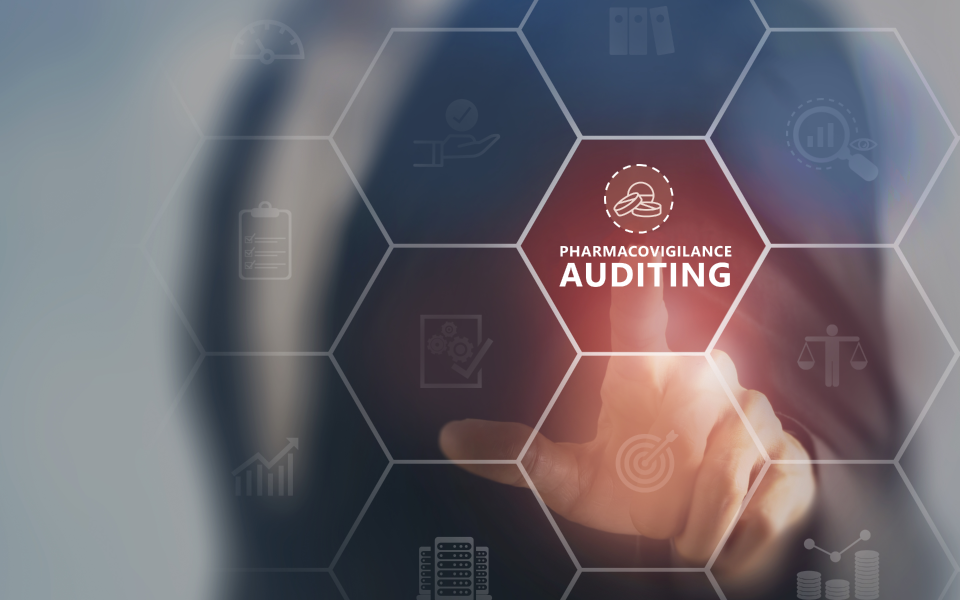Pharmacovigilance auditing is a critical function, as drug safety is a primary concern for pharmaceutical companies throughout the drug development lifecycle and beyond. Yet, the evaluation of drug safety is complicated due to safety monitoring requirements which resulted in several regulations and guidelines being enacted to assist with pharmacovigilance compliance.
The purpose behind pharmacovigilance regulations is to decrease the number of adverse drug reactions by enabling:
- the collection of more accurate data on adverse events,
- personnel to assess safety issues more accurately,
- appropriate regulatory actions to increase the safety of pharmaceuticals,
- patients to participate more actively in the process, and
- manufacturers to be more transparent and provide more effective communication.
The regulations serve to define the roles of marketing authorization holder and applicants, decrease duplication of services, free up resources through the simplification of safety reporting, and establish a clear legal framework for monitoring after authorization.
Most recently, the European Parliament issued modules on Good Pharmacovigilance Practices to define the process further.
Structure of pharmacovigilance auditing
The risk-based approach to pharmacovigilance auditing focuses on the areas of greatest risk to the organization, including, but not limited to, Quality Management System (QMS), Adverse Event (AE) handling, periodic reporting, signal detection, patient risk management, and personnel qualifications and training.
Figure 1: Suggested pharmacovigilance auditing structure
The aim of a pharmacovigilance audit is to use objective evidence to evaluate the effectiveness of a pharmacovigilance program. To that effect, manufacturers should use a risk-based approach to develop a pharmacovigilance audit strategy.
Risk planning should include all pharmacovigilance processes and tasks, the quality system currently in place to address activities related to pharmacovigilance, and intra- and inter-departmental interactions. Changes to staff and the structure of a company should also be taken into account.
Additionally, strategic risk planning should account for changes to the pharmacovigilance system since the previous audit, the important nature of the process being audited, any changes to the company that occurred since the previous audit, and the results of previous audits.
Strategic planning for a pharmacovigilance audit involves risk-based planning on the strategic, tactical, and operational levels. On a strategic level, developers should establish an audit strategy that is approved by upper management.
During the tactical planning stage, an audit plan is developed. Developers of this plan should address factors such as quality measures and critical processes within a pharmacovigilance system, areas of high risk, and areas that were not examined adequately during a previous audit.
Planning at the operational level results in a plan for individual audit engagements, prioritization of individual audit tasks, use of risk-based sampling and approaches, and a report of the audit findings according to the level of risk.
As Sponsors prepare for a pharmacovigilance audit, there are five major tips that should be taken into account.
Pharmacovigilance Auditing Tip #1: Be Prepared
The best way to be prepared for a pharmacovigilance audit is to have a good understanding of the pharmacovigilance system and all procedures in place. The auditor will want to see evidence that the pharmacovigilance system is being followed and that every SOP is being adhered to. Make sure all relevant documentation is easily accessible and up to date.
Pharmacovigilance Auditing Tip #2: Communicate with Auditors (Before, During, and After the Audit)
It is important to establish a good relationship with the auditors from the outset. Be cooperative and communicative throughout the process. After the audit, take time to review the findings and address any areas of concern. Implement any necessary changes to ensure that any recommendations are actioned.
Pharmacovigilance Auditing Tip #3: Keep Detailed Records
Pharmacovigilance audits often require access to medical records and patient data. This data must be well organized and readily available. Keeping detailed records will also help to identify any potential issues early on and prevent them from becoming bigger problems down the line.
Pharmacovigilance Auditing Tip #4: Take Action on Recommendations
After the pharmacovigilance audit has been completed, it is important to take action on any recommendations made by the auditors. Failing to do so could result in further non-compliance issues and put the company at risk of government sanctions or even prosecution.
Pharmacovigilance Auditing Tip #5: Preventative Maintenance Is Key
Preventative maintenance is key in pharmacovigilance, as it is in all aspects of healthcare. By putting systems and processes in place to prevent adverse events from happening in the first place, the company can save time, money, and unnecessary reputational damage further down the line.
Completing a pharmacovigilance audit doesn’t have to be stressful – if you’re prepared, communicative and cooperative, you’re halfway there! Just remember to keep detailed records, take action on recommendations made by auditors, and invest time in preventative maintenance.
Our experienced and knowledgeable team at MMS can help assess the compliance with pharmacovigilance auditing requirements. For questions or support, click here to be connected to a Quality & Compliance expert.
Authored by: Kelly Chain, Senior Manager, Quality and Compliance





